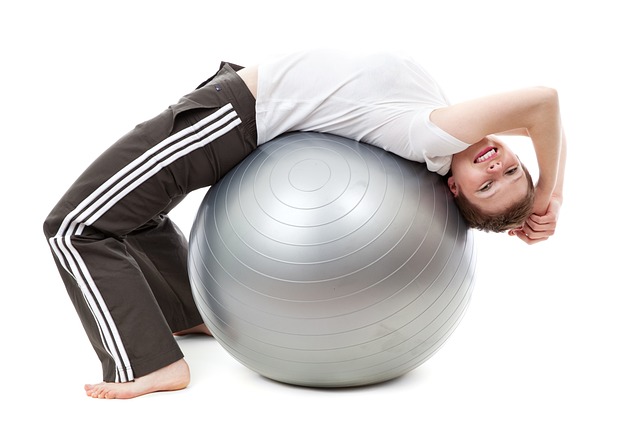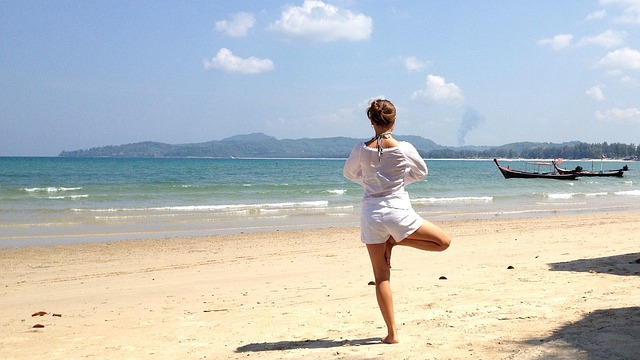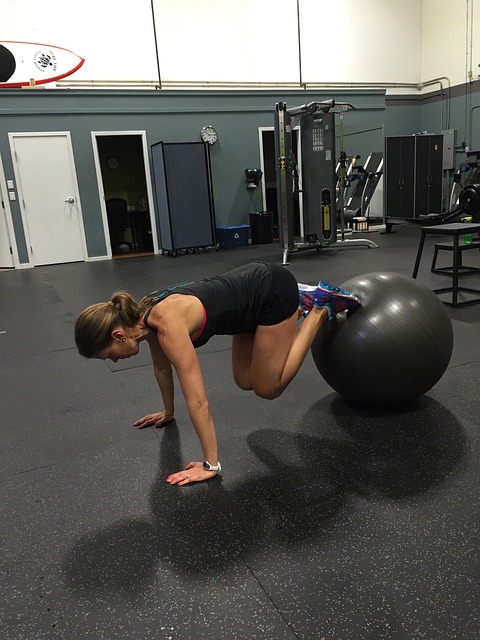You will need to enhance your balance if you want to improve your stability and strengthen your stabilizer muscles. Here’s all you need to know about your stabilizer muscles, including how to engage them.
The proper form varies with every exercise, but being able to stabilize your body is an important element of executing activities correctly. Even a simple biceps curl, for example, demands your core and shoulders to remain stable as you curl the weight toward your shoulders.
Some exercises, like squats, primarily train the quads and glutes, depending on the type of squat, but your obliques, hamstrings, calves, lower back, and abs all play a role in keeping everything moving in the right direction.
Your Muscles of Stabilization
Stabilizer muscles work to stabilize one joint so that the necessary movement can be done in another. These muscles are normally not directly involved in a movement, but they help to keep you stable so that your primary muscles can work.
A chest press on an exercise ball is another example. The triceps and chest are the primary muscles engaged, but the abs, back, and legs work isometrically to stabilize your body.

That is, doing a single activity requires numerous muscles to fire at the same time. Training such muscles improves not only your form but also your balance and coordination. The good news is that training your stabilizer muscles during your normal workouts is quite simple.
Stability Progression of Exercise
Balance and stability may be difficult for new exercisers, which is a good reason to focus on these areas of fitness before progressing to more difficult activities. Depending on where you start, there is a natural growth of stability.
Here is how your training routine will grow to strengthen your stabilizer muscles and enhance your balance if you are a beginner.
Work out while sitting. You have support for your lower body when seated, so you don’t have to work as hard to stabilize.
Stand during the workout because you’ve removed any support; standing forces you to engage your complete body in the activity. Your body must now support itself while you perform the activity.
Take a broad posture. Standing in a wide stance broadens your base of support, helping you feel more balanced and stable.
Have a narrow attitude. Put your feet closer together, and you’ll feel less steady, causing your stabilizer muscles to activate.
Stagger your steps. The next step is to stand with one foot slightly behind the other in a staggered position. This quickly throws your balance off because your steady base is no longer present.
Make use of a split stance. Try standing in a split stance with one foot in front of the other, about three feet apart. This is the same posture used during a lunge, and it is far more difficult to maintain your balance than in a wide or staggered stance.
Use a tandem stance. This is comparable to standing on a balance beam, one foot in front of the other. Try executing an activity in this position to really test your balance.
Stand on one foot. The final step is to exercise while standing on one leg. Every muscle in your body will contract to help you maintain your equilibrium.
Stability and balance Exercises
If you want to improve your balance and stability, the only way to do so is to practice it on a regular basis. You can see the significant result in stability in as little as 6 weeks if you train about 15 minutes per day for 4 times a week.
When performed on a regular and efficient basis, one balance workout—for example, standing on one leg—can lead to better core stabilization and strength. This combination of muscle strengthening and balance development can help minimize pain and prevent falls. Use these exercises in your daily routine to improve your balance and stability.
Exercises for Beginners
To increase your balance and stability, you don’t even need to exercise. You can enhance your balance by doing workouts and routines numerous times a day.
Try practicing your moves when you have leisure time, like while watching TV, talking on the phone, or when taking a break from work. If you feel unstable, stay close to a wall at first to keep yourself from falling. Step away from the wall as you develop.
Balance Exercises for Beginners
- Stand on one foot.
- Close your eyes and stand on one leg.
- Stand on one leg and swivel your head from side to side slowly.
- Stand on one leg and make a large circle with your opposing arm.
- Walk forward with one foot in front of the other, as if you are on a balance beam.
- You should walk across the room on your heels.

Advanced Workouts
Once you’ve mastered the introductory exercises, you might wish to progress to more difficult motions, especially if you work out on a regular basis. More balance-oriented activities can help you improve your balance and stability.
Here are some advanced workouts to incorporate into your regular workout program. They are also an excellent approach to improving strength, endurance, and flexibility.
Advanced Balance Workouts
- Single-leg squats
- One-leg biceps curls
- Single-leg deadlifts
- Hip raises with one leg on the ball
- Leg raises with a bent-over position
- Triangle Warrior,
- I Pose Warrior
- II Posture Posture
Stability and Balance Workouts
The workouts below feature a range of equipment to help you focus on balance, stability, and core strength—all of which will build your stabilizer muscles and boost your coordination. Here’s how to include these workouts into your training routine.
Ball Exercise for Beginners
Do a beginner ball workout with an exercise ball to improve your balance. Sit on the exercise ball and slowly roll your hips in clockwise and counterclockwise revolutions. Rep the maneuver 20 times in each direction. This workout will help you to stabilize your hips and balance your core.
Instead, place the ball against the wall and lean against it. Squat down carefully and roll the ball down the wall. You’ll improve your abdominal strength as well as your glute, thigh, and hip power. To increase the difficulty of this action, add dumbbells and hold them out straight at shoulder height.
BOSU Workouts
Including BOSU exercise moves will assist you in becoming accustomed to utilizing a BOSU balance trainer. Simply standing on the BOSU ball with both feet slightly off-center of the bullseye, for example, will put your core stability to the test. If you need more help with your balancing practice, place your hands on a wall or the back of a chair.
Try completing a crunch while seated on top of the dome to elevate your BOSU exercises. By transferring this motion from the floor to the BOSU, you’ll be incorporating a stabilizer practice into the exercise, focusing on your core and obliques as you crunch up. BOSU exercises require no other equipment. Dumbbells will assist you in increasing the intensity of some moves.
Stretching with an Exercise Ball
Balance workouts can benefit from the addition of an exercise ball. When performing a lunge, place an exercise ball between your legs and rest on it as you deepen the stretch.
Slowly walk your feet forward until your back is fully extended on the ball and your chest is open to aim your chest while sitting on the ball. Breathe deeply and notice how your chest and abdomen stretch. Overall, exercise ball stretches will enable you to start a stretching routine using simply an exercise ball.
Exercise for the Whole Body
Do a total body workout if you want a complete workout. Begin with a short warmup of up to 10 minutes to get your heart rate up and your muscles warmed up. After that, perform a superset of lunges, squats, leg presses, deadlifts, and rows.

Add a medicine ball, exercise ball, resistance band, and dumbbells into each step to provide balance practice. You’ll get a full-body stabilization workout by switching between routines and targeted muscles.
Core Exercises on the Ball
Core exercises with an exercise ball and a medicine ball will challenge your core. Sitting on an exercise ball, using it as a weight bench, or doing core work is a terrific method to work on those stabilizer muscles without having to think about it.
Sit on the ball and roll around while watching TV or while working on the computer. Even a few minutes every day can have an impact. Strengthening those muscles and increasing your balance will have a positive impact on other aspects of your life.
To Conclude
Good stabilizer muscle strength is essential for maintaining proper form in all types of workout regimens. You may prioritize and improve your fitness by strengthening these stabilizing muscles. Begin gradually introducing these workouts into your general regimen, adding them as you observe better stability and improved form.
Of course, if you are new to exercise or are at a higher risk of falling, you should consult with a healthcare physician before beginning a new exercise program. Similarly, you may benefit from engaging with a personal trainer who can adapt a program to your specific goals while also ensuring your safety.
